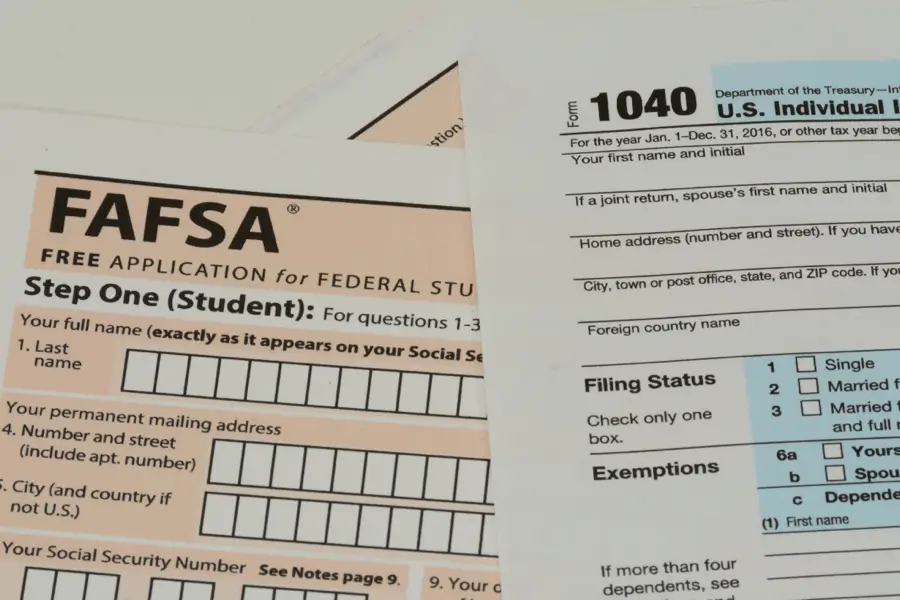
FINANCIAL AID

The Free Application for Federal Student Aid (FAFSA) is used to determine a student’s eligibility for financial aid. The FAFSA is distinct from the CSS Profile, which is fee-based and required by some universities and colleges. Filling out the FAFSA helps the US Department of Education connect enthusiastic college and university students with more than $150 billion in funding for their education, which is offered in the form of loans, grants, and work-study opportunities. Most students are eligible for need-based financial aid, and those who aren’t may still be entitled to receive an unsubsidized Stafford Loan regardless of financial circumstances.
For the 2017-2018 academic year, the FAFSA will be available three months earlier, on October 1 rather than New Year’s Day. In addition to giving students more time to apply, families will be able to use their 2015 tax information instead of 2016 tax information to complete the form. As some financial aid is given on a first-come, first-serve basis, students are advised to submit their application as close to October 1, 2017, as possible. While the 2017-2018 FAFSA deadline is June 30, 2018, some state and college deadlines are as early as November 2017.
After completing the FAFSA, students will receive a Student Aid Report (SAR), which is an electronic or paper document that outlines a student’s eligibility for financial aid and summarizes the answers you gave on the FAFSA. You will also receive an Expected Family Contribution (EFC), and a recap of all information provided on the application. These documents should be carefully reviewed for any discrepancies or errors so that corrections can be made.
If you find an error:
Students can also list up to ten schools to receive their FAFSA results. The US Department of Education will then send the student’s SAR to those listed colleges. If a student wishes to modify or expand this list after submitting their form, they can log into their account on the official FAFSA website, select the option “make FAFSA corrections” and follow the instructions listed. If the student wishes to send their SAR to more than ten colleges, they should contact the ten schools on their FAFSA to make sure the SAR was received, then go back into the account and make additions.
Students, parents or anyone applying for student aid is required to have an FSA ID to log into US Department of Education websites. A username and password are used to identify the borrower when accessing financial aid information or electronically signing legally binding documents. Students, legal guardians, and parents cannot share an FSA ID, so if a parent wishes to sign his or her child’s FAFSA, they must have their own FSA ID.
If a parent has more than one student attending college, they can use the same FSA ID to sign each child’s application, but each student must have their own FSA ID. Once the information is verified by the Social Security Administration, which usually takes from one to three days, parents and students will be able to use their FSA ID to access personal information on US Department of Education websites.
You can create a FSA ID by logging into the Federal Student Aid website and completing the following steps:
After creating your FSA ID, students should gather the appropriate documents needed to fill out the FAFSA application for the 2017-2018 academic year, based on the descriptions (citizenship and dependency status) listed below:
The Federal Student Aid office advises students who wish to submit a paper application to use black ink when filling out their FAFSA application. Answer all questions completely, use capital letters and use empty boxes to indicate spaces between words. Do not use cents when reporting financial amounts; only use the dollar amount. Do not leave any blanks.
The US Department of Education will process your application within three to five days from the time you filled out all your information and submitted your FAFSA online using FAFSA on the Web. If you submitted a paper FAFSA, your application will be prepared within seven to ten days (even if you submit a paper application, you can log into FAFSA on the Web and create a username and password to check the status of your application). When your application is processed, you will receive a Student Aid Report (SAR). This is a synopsis of all the information you provided on your FAFSA. At this point, you should review your information to ensure it is correct. If you are missing any information or the information isn’t accurate, you should log into FAFSA on the Web with your log on information and make corrections as soon as possible.
If you submitted an email address on your FAFSA, you will receive an email with instructions about how to access your SAR online. If you did not submit a valid email, your Social Security number doesn’t match what’s on file at the Social Security Administration office, or you forgot to sign your FAFSA, you will receive an SAR or an SAR acknowledgment through the mail. It is typical to be able to access your SAR within two weeks of filing your FAFSA.
It’s important to note that any student or parent with an FSA ID can view or print his or her SAR by going to FAFSA on the Web and logging in, then selecting “View or Print your Student Aid Report (SAR).”
At this point, your SAR will be sent to all the colleges you noted on your FAFSA. The colleges will then use this information to determine your eligibility for federal aid. The colleges you list will create your award package and disburse your financial aid. However, some colleges do not award financial aid to every applicant, so you should contact the office of financial aid at any college you are choosing to attend for details about applying for aid at that specific college. An award letter will outline costs to attend the college, as well as any scholarships, grants, work-study or loans you may be eligible to receive. Most colleges send out these letters about the same time as letters offering admission.
Keep in mind, you are not obligated to accept financial aid if you choose not to. Students who are awarded financial aid may refuse it if their circumstances change and they no longer need it.
To receive federal student aid, you must meet the following basic eligibility criteria:
Your eligibility depends on a variety of factors, including your year in college, enrollment status, the cost to attend the college or university, and your Expected Family Contribution. The financial aid office at your college will determine how much you can receive based on this information.
For the 2017-2018 school year, you can complete your FAFSA between October 1, 2016, and midnight (CST) on June 30, 2018. Keep in mind that some institutions have earlier deadlines, so check with the college financial aid office.
Yes. Your eligibility does not carry over from one year to the next.
On the IRS website, the IRS Data Retrieval Tool permits students or parents who have previously filed their federal income tax return to prefill answers to some of the questions on the FAFSA by moving data from their tax returns.
A DRN is a four-digit number which is assigned to your application. It is printed in the upper-right corner of the SAR and on your confirmation page. This number should remain private unless you are giving it to a financial aid administrator and you are adding colleges to your FAFSA or changing data.
If you log in and find that your FSA ID is disabled, you will need to call customer service for more information at 1-800-433-3243.

The Art Career Project is a trusted resource for emerging and professional artists.